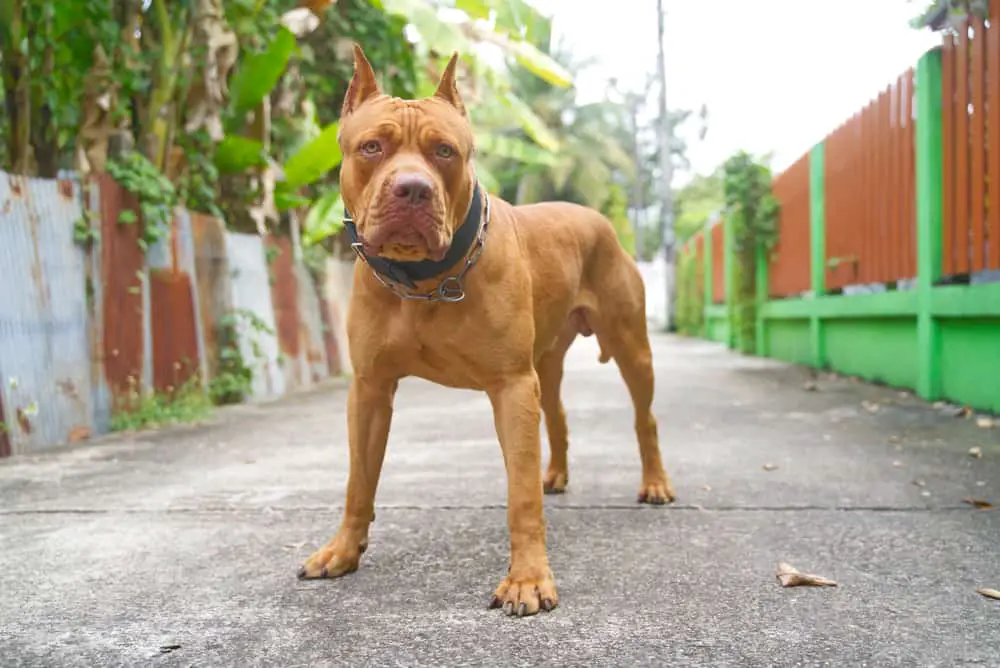
Whenever wild animals encroach on our urban areas and start crossing paths with our domesticated pets, we start wondering if there are any safety issues we should be concerned about. We also are naturally inclined to worry about how well our dog would fair against a wild hunter. A question that is commonly raised is what would happen if a coyote faced a pitbull?
Coyotes are weaker and smaller than Pitbulls. Coyotes are wild hunters and scavengers, but not fighters. Pitbulls often dominate coyotes in altercations based on their athletic build, size difference, and superior jaw strength. A pack of coyotes is more dangerous to a Pitbull than an individual.
The physical traits and behaviors of both the coyote and the pitbull breeds will determine whether these two would be any match for each other. The below statistics may help us imagine the outcome of this hypothetical clash.
Table of Contents
- About the Coyote
- Coyote Distribution
- Coyote Physical Attributes
- Coyote Diet
- About the Pitbull
- Pitbull Physical Attributes
- Pitbull Diet
- Conclusion
About the Coyote
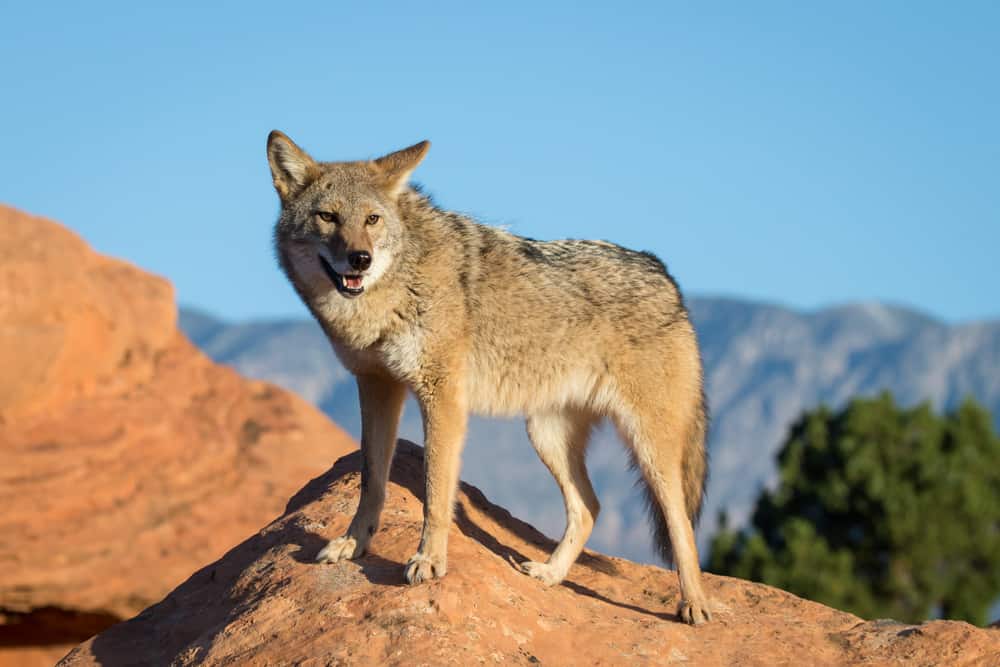
Coyote (Canis latrans), also called brush wolf or prairie wolf is a member of the dog family (Canidae) that is smaller than the wolf with a more slight build. The coyote is a prevalent character in Native American folklore, usually depicted as a trickster that alternately assumes the form of a coyote or a man. There are 19 recognized coyote subspecies.
Coyotes have a flexible social organization, living either in a strong family unit or in packs of loosely-knit, unrelated individuals. They communicate with a distinctive yapping call, which at night often escalates into a boisterous wolf-like serenade. The coyote is primarily nocturnal.
Both members of a breeding pair of territorial coyotes will defend their territory against other coyotes and predators. Territories commonly are marked with urine and feces, and some believe that howling indicates that the territory is claimed. Most territories range from 10 to 40 square km (4 to 15 square miles).
Coyote Distribution
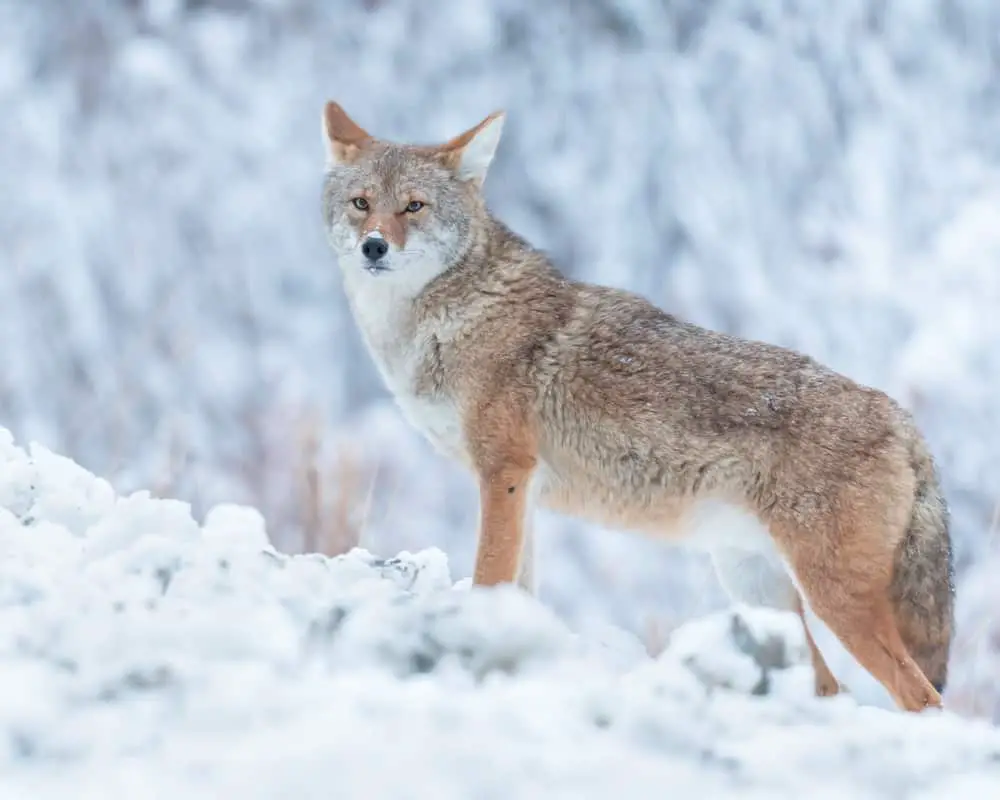
The coyote is often depicted in the tales of Native Americans as cunning and clever, and modern coyotes use their savvy to adapt to the changing American landscape. The coyote once lived primarily in deserts and open prairies but can now also be found in mountains and forests, and are widely distributed throughout North America and have even colonized cities like Los Angeles.
The coyote is found southward from Alaska into Central America, particularly on the Great Plains. Historically, the Appalachians formed the eastern border of its range, but the coyote population has expanded throughout the United States and Canada.
Coyote populations are also abundant through Mexico and into Central America. The coyote is versatile, adaptable, and easily settles into urban areas modified by humans. The coyote was sighted in eastern Panama for the first time in 2013.
Coyote Physical Attributes
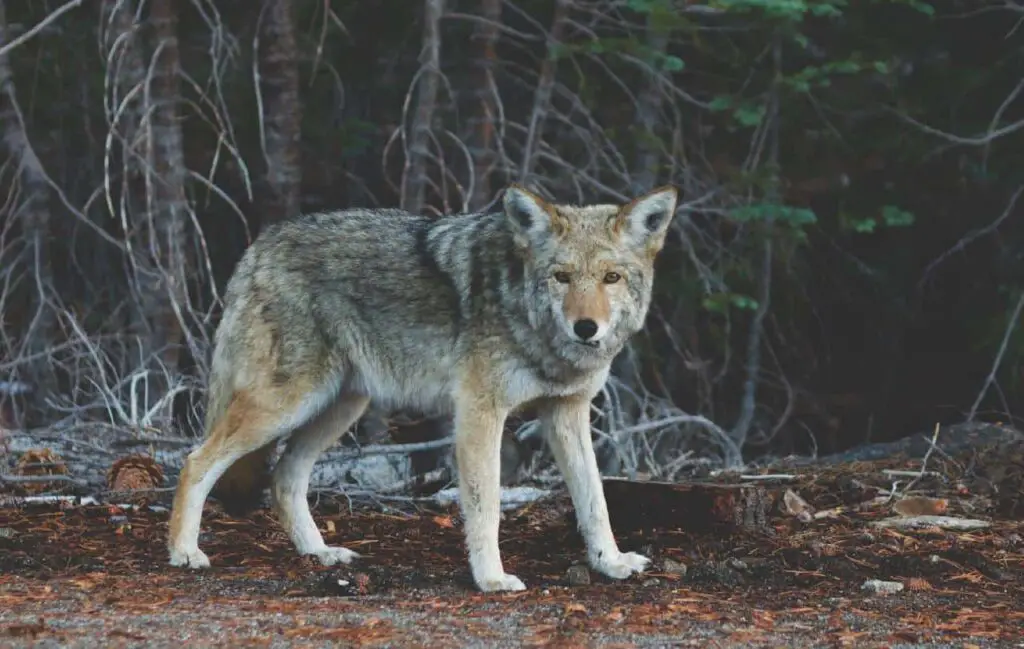
Coyote size and fur color vary geographically. The Northern subspecies average 18kg (40lb), and are larger than the Mexican subspecies which average 11.5kg (25lb). Body length ranges on average, with females being shorter in both body length and height. The largest coyote yet recorded was in 1937, which was a male, measuring 1.5m (4 ft 11 in) from tail to nose and weighing 34kg (75lb).
The texture and color of the coyote’s fur vary to suit their geographical habitats. Coyotes living at high elevations commonly have more black and gray shades than their desert-dwelling counterparts, which are more brownish-yellow or whitish-gray. The coyote’s fur has short, soft underfur and long, thick guard hairs.
Average Coyote Attributes:
- Height – stands approximately 60cm (24 inches) at the shoulder
- Weight – males average 8 to 20kg (18 to 44lb), while females average 7 to 18kg (15 to 40 lb)
- Body length – 1.0 to 1.35 m (3ft 3 inches to 4ft 5 inches), and tail length 40cm (16 inches)
- Speed – can reach a running speed of 64km per hour (40mph)
- Life span – average lifespan in the wild 6 to 8 years (14 is the oldest average) with some coyotes living to 21 years in captivity
- Fur color – The fur is long and coarse and is usually grayish-buff on top and whitish underneath, reddish on the legs, with a bushy black-tipped tail.
- Bite force – estimated between 88 PSI (pounds per square inch) and 150 PSI
Coyote Diet
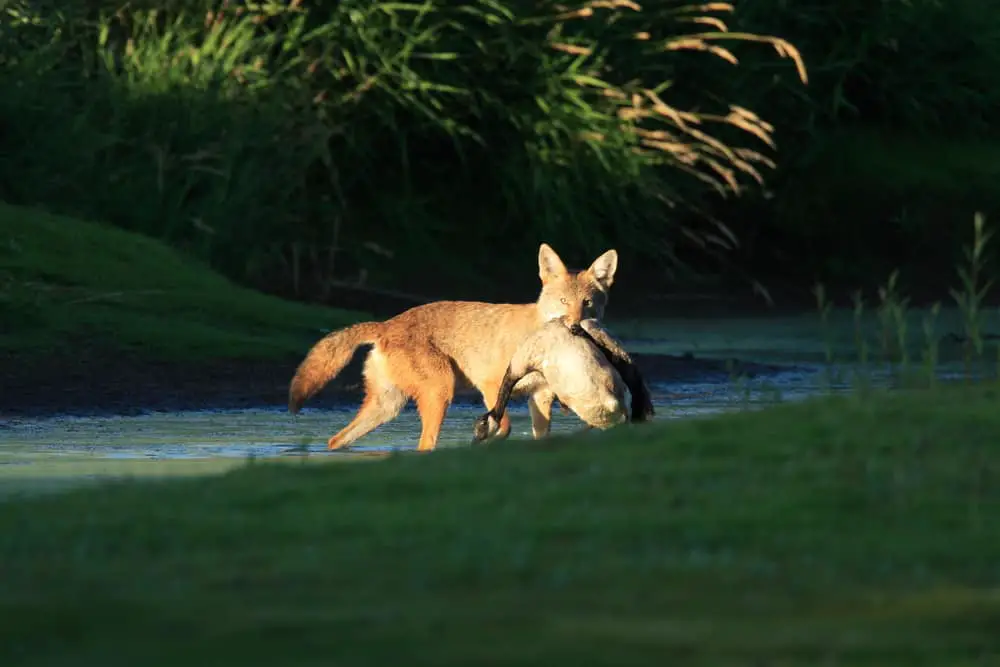
Coyotes are extremely efficient hunters and scavengers with keen senses. They are predators that rely on sight in open areas, but they generally use scent and sound to find prey in thick vegetation or forest.
Common Coyote Diet:
- Snowshoe hare
- White-tailed deer (more success in thick snow or larger packs)
- Carrion
- Wild berries and fruit (when prey is scarce)
- Mouse-sized rodents
- Ground squirrels
- Small pets left outside overnight (in urban areas)
About the Pitbull
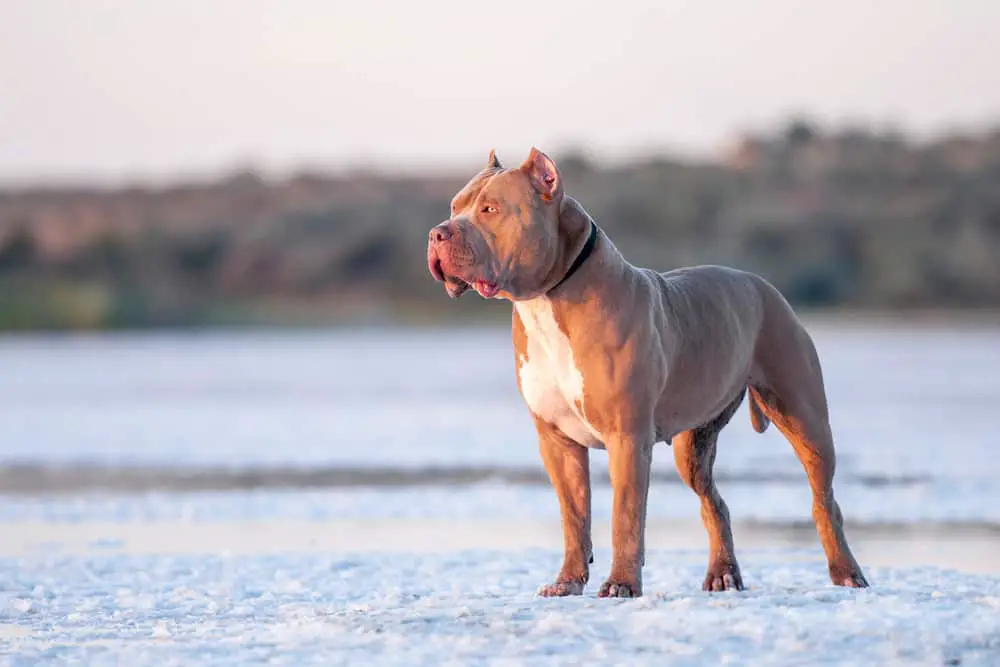
A Pitbull is not officially a dog breed in itself. It’s a general term used for a dog descended from Old English Bulldogs and Black and Tan Terriers. Often other similar-looking breeds will be grouped under the Pitbull label. The American Pitbull Terrier is the main dog breed that is associated with the name Pitbull.
There are four official breeds of the Pitbull-type dog:
- American Pitbull Terrier
- American Staffordshire Bull Terrier
- Staffordshire Bull Terrier
- American Bulldog
The sad history of the bull-and-terrier is that it was a type of dog developed in the early 19th century in the United Kingdom for the bloodsports of dogfighting and bull or bear-baiting.
After the inhumane sport was declared illegal, breeders wanted to produce a lighter, faster, more agile working dog that retained the courage and tenacity of the Bulldog, crossbreeds from local terriers were tried and ultimately found to be successful.
Despite their vicious reputation and increased numbers in shelters, they are anything but vicious if they are raised properly. They were initially bred and trained never to harm their human handlers, and that trait is still seen today. The Pitbull and all Power Breeds require a strong owner who can enforce constant discipline, exercise, training and include the dog in the family.
If left to their own devices, their natural instinct will rule, and they could be dangerous.
Pitbull Physical Attributes
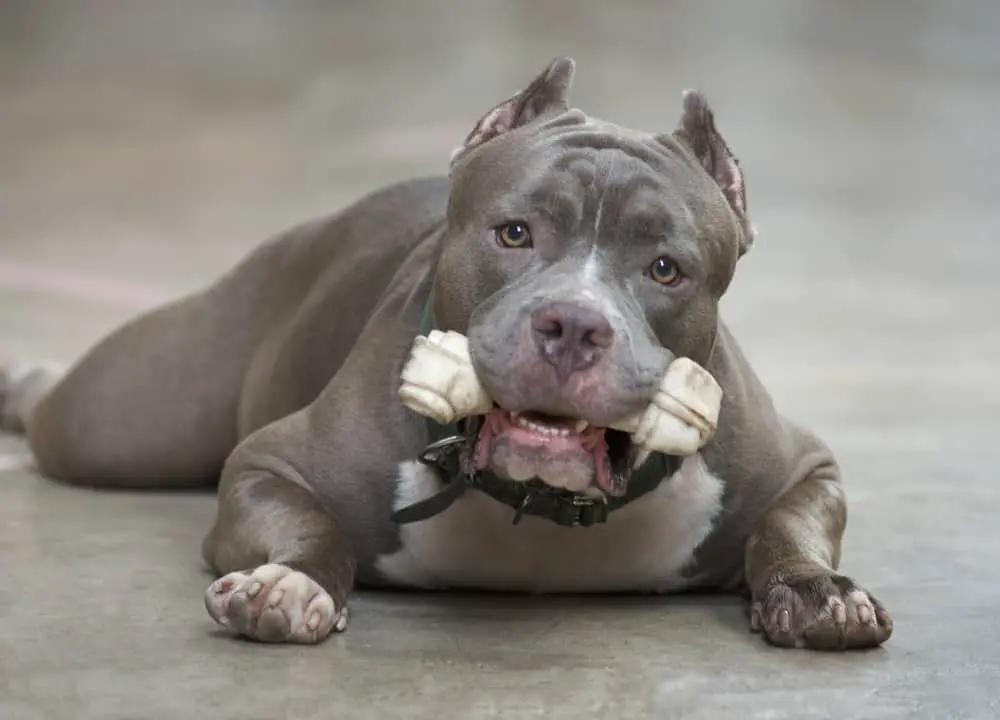
All Pitbull-type dogs share their intimidating, athletic and muscular look. Some dogs are stockier and wider, and some are taller and more athletic. All Pitbull-type dogs have a square-shaped head (affectionately called block-heads), a square nose, and large almond-shaped eyes.
They have smooth coats of short hair, which requires minimal brushing and bathing. Their tails are long and straight (not cropped), and their ears are rose-shaped, except when clipped into points. Many owners still prefer this look, even though it stirs up mixed opinions and makes a dog look more aggressive, further damaging their reputation.
Pitbull dogs come in almost any animal color you can think of, except for merle. The mottled merle color gene is not naturally found in these breeds and is rejected by Breed Standard Legislation.
Average Pitbull Attributes:
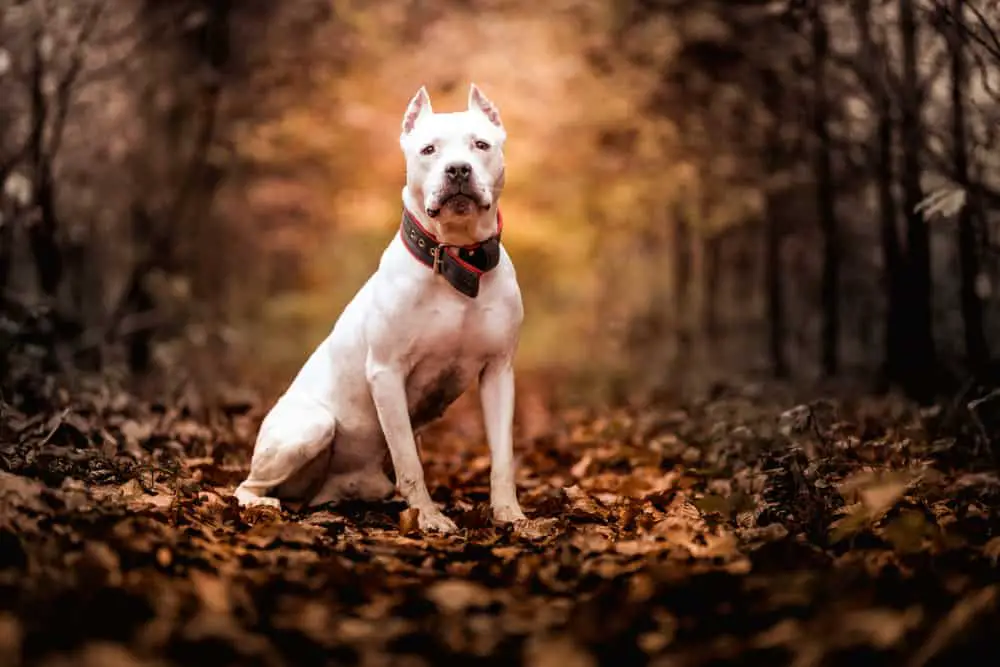
- Height – males are approximately 45 to 53cm (18 to 21 inches) in height, and females measure 43 to 50cm (17 to 20 inches) in height.
- Weight – males average 15 to 27kg (35 to 60lb), and females 13 to 22kg (30 to 50lb)
- Speed – can reach a running speed of 40 to 48km per hour (25 to 30 miles per hour)
- Life span – the average lifespan of 8 to 15 years
- Fur color – commonly black, red, buckskin, and brindle, but there are over 20 different colors in this breed.
- Bite force – estimated around 235 PSI (pounds per square inch)
Pitbull Diet
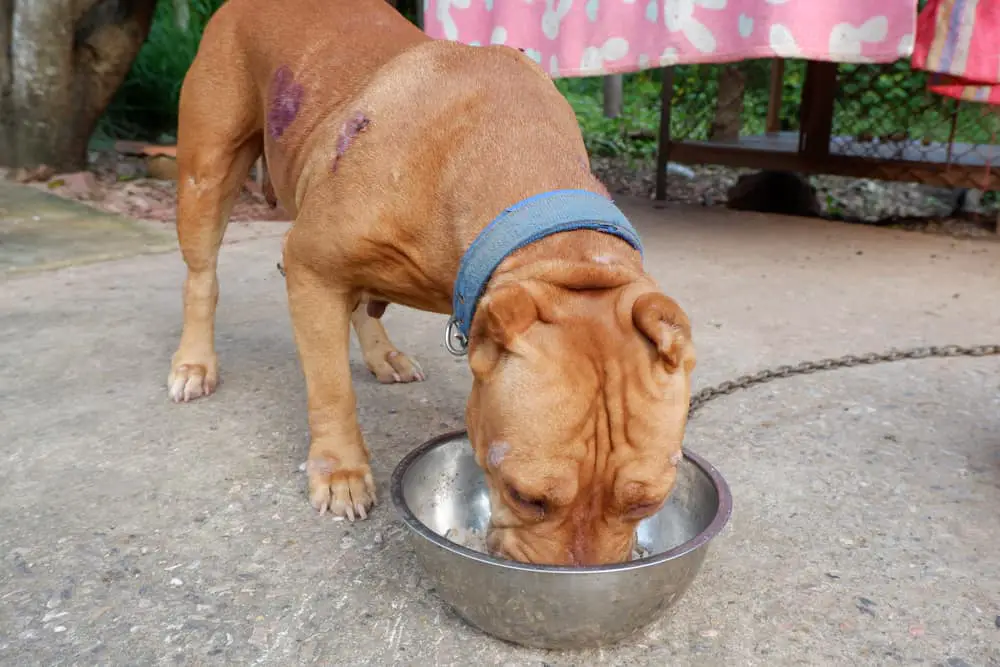
Pitbulls are very athletic dogs and therefore need a well-balanced diet of proteins, carbohydrates, fatty acids, vitamins, and minerals, to give them the energy they need to get through all their activities. To keep your Pitbull healthy and happy, ensure they have the proper ratio of ingredients.
Balanced Diet Ratios:
- High-Quality Protein – 30-40%
- Carbohydrates – 20-30%
- Animal Fats – 14-17%
- Calcium – 1-1.5%
Conclusion
Coyotes would not fare well against Pitbulls in a fight as they are smaller and don’t have the bite force to compete with a Pitbull. Coyotes are quick and agile, but if they pick a fight with the wrong Pittie, it will probably be their last. P
itbulls are not generally instigators, but they are stubborn and will not easily back down if they are attacked, and they tend not to feel pain when they are locked in a battle.
There are tales of a single Pitbull that was attacked in his yard by a coyote and followed it back into the mountains, where the Pittie killed the entire pack of nine coyotes. Whether this is fact or fiction, it does caution one to the cunning, opportunistic nature of the coyote and highlights the tenacity and brute strength of the American Pitbull Terrier.
References:
Britannica: Coyote
National Geographic: Coyotes
Urban Coyote Research: How to Avoid Conflicts with Coyotes
Dog Time: Pitbull Terrier
Animals Comparison: Coyote vs Wolf vs Pit Bull fight comparison – Who will Win?
Love Your Dog: Types of Pitbull Dog Breeds: Differences, Appearances, & Traits
Pitbulls: Pitbull Diet
Keating Firm Law: Dog Bite Force Guide
Spirit Dog Training: Pitbull Colors

